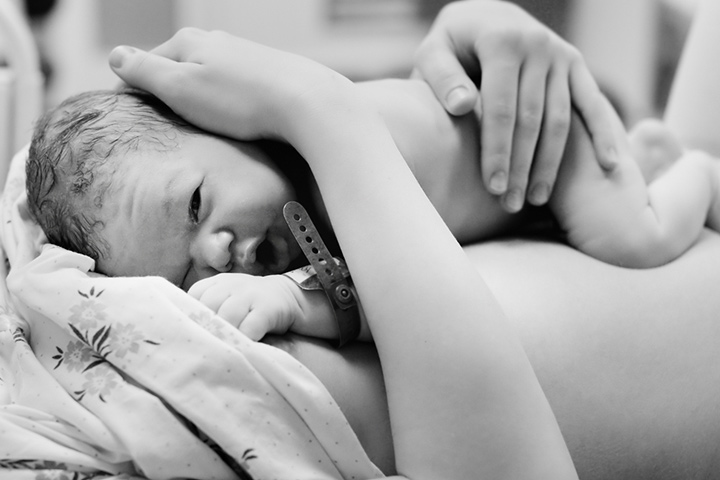
You might have observed a newborn having an uneven head soon after birth. If you are worried about your baby’s cognitive function or development being impaired, you can breathe a sigh of relief. A conehead shape in babies is no cause for worry. And if you are concerned about the tapered appearance of your baby’s head, we are here to tell you that this problem can be fixed too if it’s addressed quickly during the initial months of your baby’s birth. Continue reading theMomJunctionpost to understand what causes conehead in babies and how it can be treated.
Uneven Head Shape In Babies: What Causes It?
When a baby passes through the birth canal, this pressure can cause the baby’s head to be molded unevenly. Babies have two soft spots at the top of their heads called fontanels. Their skull bones are yet to be completely developed. This comes as an advantage since the soft areas on their head makes it easy for them to pass through the narrow birth canal. It also helps in accommodating the growing baby brain during their early years of development(1).
Another reason why this happens is the pressure of lying on their back, which causes a change in the shape of their head. Because babies’ heads are pliable, resting their head for a long time on their back can result in an uneven head. This is known as positional plagiocephaly.
How To Identify Conehead In Babies?
The best way to identify positional molding is by looking at your baby’s head from the top. If your baby’s head looks flatter on one side and not so much on the other, it could be a sign of uneven head shape. The ear on the flat side of the head might also look slightly pushed forward compared to the other. If you find it hard to figure out on your own, your baby’s doctor will be able to guide you through it(2).
Why It’s Not A Cause For Worry
It’s natural for parents to worry about their baby’s uneven head shape. However, conehead is more of a cosmetic issue. It won’t cause brain damage or impairment of cognitive function in babies. So, instead of worrying about the head shape, it’s best to enjoy this time with your little one and have fun. Your baby will soon develop better neck control as they grow up and this will help them maintain even distribution of pressure on their skull(3).
它如何能Treated?
If you believe your baby has positional plagiocephaly, your pediatrician will first conduct a physical examination to make the right diagnosis. Positional plagiocephaly can be treated in the following ways(4):
- 把宝宝放在他/她的肚子
Place your baby on his/her tummy instead of always on their back. However, it’s important to note that babies should be placed on their stomachs under close supervision and on a firm bedding.
- Change Directions
While it is always recommended to place the baby on his/her back to sleep, you can alternate the direction. For example, if you’re used to placing the baby’s head on the head of the crib, alternate and place their head on the foot of the crib the next day. Similarly, you can also change directions when you are feeding your baby.
- Hold Your Baby Whenever You Can
Instead of always placing them on infant seats, swings, or carriers, hold your baby when they are awake whenever you can.
- Using Helmet
If your baby’s head continues to be uneven after 6 months, your child’s doctor might recommend using a molded helmet since the shape of their skull is still malleable during the growing years.
We hope that you have now gained enough clarity and understanding of positional plagiocephaly in babies. If you have any queries or concerns about your baby’s head shape, make sure you contact your healthcare provider immediately. Also, feel free to share this post with fellow mommies of your community to help them understand the reasons behind unevenness in babies’ heads.















